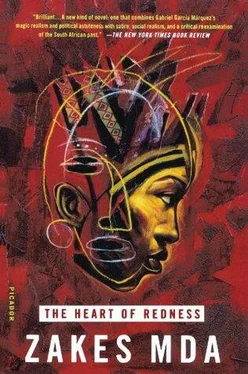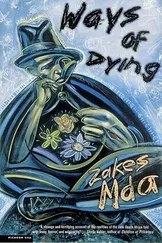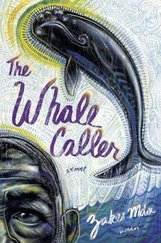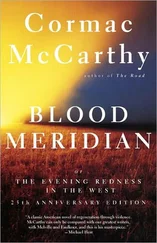“No, he did not mean it that way, my fathers,” says Camagu. “There is nothing foolish about belief.”
“Nothing foolish about belief!” exclaims Dalton incredulously. “Dead people and cattle rising from the sea! And you say there is nothing foolish about that?”
“If your Christ can walk on the sea and turn water into wine, so can Nongqawuse’s cattle rise from the sea,” declares Zim. “And they did rise. People saw them, didn’t they? Even kings like Sarhili saw them. There were witnesses to these miracles, in the same way that your Christ had witnesses to his. Of course, the cattle rose only to prove the truth of the prophecies. They rose only to be seen among the waves, then went back to the world of the ancestors. They would not have gone back if the Unbelievers had not continued to unbelieve.”
“The old man is putting it well,” says Camagu. “Believers are sincere in their belief. In this whole matter of Nongqawuse I see the sincerity of belief, John. It is the same sincerity of belief that has been seen throughout history and continues to be seen today where those who believe actually see miracles. The same sincerity of belief that causes thousands to commit mass suicide by drinking poison in Jonestown, Guyana, because the world is coming to an end. . or that leads men, women, and children to die willingly in flames with their prophet, David Koresh, in Waco, Texas.”
“I do not know if you can compare our prophets with prophets who come from white people’s books,” says the uncle.
“What I am saying is that it is wrong to dismiss those who believed in Nongqawuse as foolish,” says Camagu. “Her prophecies arose out of the spiritual and material anguish of the amaXhosa nation.”
Dalton feels betrayed. It is fine to humor these people sometimes, to go along with their foibles before putting them on the correct path. But this Camagu seems to believe what he is saying. He is not merely ingratiating himself with his in-laws. He speaks with conviction. The Believers, on the other hand, hear his words. But they don’t mean anything to them. Educated people, they say, like to mystify the most straightforward of things. To cloud them with meaningless words.
“You know very well, Camagu, that Nongqawuse was a little girl who craved attention,” Dalton says. “She had vaguely heard of the teachings of Nxele about the resurrection. . and the Christian version of it, as her uncle had been a Christian at some stage. She therefore decided to concoct her own theology. . which gathered momentum as she gained more prestige as a great prophetess. These were the delusions of a young girl!”
This Dalton does not give up. His tongue becomes more careless as the bottles get emptier and as the sun creeps towards its resting place.
“Miracles are miracles, John. She was a young girl, yes, and young girls are prone to seeing visions,” says Camagu.
“If somebody I know who is a principal at the secondary school were here, she would tell you that the statement you have just made is highly sexist,” laughs Dalton.
“It is true, you know? Who’s always seeing visions of the Virgin Mary? Young girls. Our Lady of Fatima. . our lady of this and that. . all places where young virgins saw visions of the Virgin!”
The following day Camagu is shamefaced. He sits on the stoop while the rays of the morning sun warm his naked torso. He regrets that he argued with Dalton at Zim’s place. They made fools of themselves in the presence of his in-laws. They must have sounded arrogant and vain, arguing about people’s beliefs as if they were the fountains of all wisdom. Blabbering in loud voices while the elders watched in undisguised disgust. No wonder they have no respect for so-called educated people. It was all Dalton’s fault. He was drunk. Camagu himself did not touch the brandy at all, although he got louder with those who did. Dalton was gulping it like water. By the time they left he was staggering and singing boisterously.
He is thinking of how he will redeem himself to his in-laws when Dalton arrives in his four-wheel-drive bakkie. The trader is in a jolly mood. He greets Camagu and carries on about the great success of their mission yesterday. He stops when he sees that Camagu is sullen.
“What is wrong, man? What have they done to you now?”
“You embarrassed me yesterday.”
“Is that how you thank me for getting you a bride?”
“You got too drunk. What will those people think of us?”
“Those people are my people, man. I know them. They know me. I grew up with them. I am one of them. I do not know why you should be concerned how I behave when I am with them. Anyway, I came to talk about the plans you outlined at the meeting the other day.”
“Ja. What about them?”
Dalton says he has thought long and hard about them. He feels that they are good. But they can still be improved. Instead of building a backpackers’ hostel with self-catering chalets for nature-loving tourists, they should construct a cultural village owned and operated by the villagers. He already has two formidable women in NoManage and NoVangeli who are experienced in entertaining tourists by displaying cultural performances and practices of the amaXhosa. This is a proven kind of business. Tourists like visiting such cultural villages to see how the people live. The village will have proper isiXhosa huts rather than the newfangled hexagons that are found all over Qolorha. Women will wear traditional isiXhosa costumes as their forebears used to wear. They will grind millet and polish the floors with cow dung. They will draw patterns on the walls with ochre of different colors. There will be displays of clay pots and other earthenware items. Tourists will flock to watch young maidens dance and young men engage in stick fights. They will see the abakhwetha initiates whose bodies are covered in white ochre. They will learn how the amaXhosa of the wild coast live.
“The abakhwetha initiates? Right there in the middle of the cultural village? What will the initiates be doing in the village?” wonders Camagu.
“These will be actors, man, not the real abakhwetha.”
“Then we won’t be showing the tourists the true picture of how the amaXhosa live. In the real-life situation you don’t find abakhwetha hanging around the village, women in their best amahomba costumes grinding millet and decorating walls, while maidens are dancing, and right there in front of the house young men are fighting with sticks. It’s too contrived.”
“That’s the purpose of a cultural village: to show various aspects of the people’s culture in one place.”
“That’s dishonest. It is just a museum that pretends that is how people live. Real people in today’s South Africa don’t lead the life that is seen in cultural villages. Some aspects of that life perhaps are true. But the bulk of what tourists see is the past. . a lot of it an imaginary past. They must be honest and say that they are attempting to show how people used to live. They must not pretend that’s how people live now.”
“It seems you intend to oppose everything that I come up with,” says Dalton bitterly. “First it was my water project, now you knock down things I have been doing successfully here with NoManage and NoVangeli long before you came to this village.”
“I am just saying I have a problem with your plans. It is an attempt to preserve folk ways. . to reinvent culture. When you excavate a buried precolonial identity of these people. . a precolonial authenticity that is lost. . are you suggesting that they currently have no culture. . that they live in a cultural vacuum?”
“Now you sound like Xoliswa Ximiya!”
“Xoliswa Ximiya is not capable of saying what I have just said. She talks of civilization, by which she means what she imagines to be western civilization. I am interested in the culture of the amaXhosa as they live it today, not yesterday. The amaXhosa people are not a museum piece. Like all cultures, their culture is dynamic.”
Читать дальше












